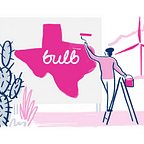Celebrating biodiversity on World Environment Day
Bulb members help to protect biodiversity through carbon offsetting. In this post, learn how this contributes to tackling the climate crisis.
It’s World Environment Day and we want to celebrate biodiversity with you. So we’re calling artists of all ages and talents to color in our illustrations of animals that live in the Gola Rainforest. We help to protect the trees and wildlife of the forest through carbon offsetting.
First up is an illustration of the Tree Hyrax, a relative of elephants and sea cows — though you wouldn’t know it by looking. You can hear their territorial call in the sounds we recorded from our recent visit to Gola (listen at 5 minutes 26 seconds).
You can download the illustration to color at home. You can print it out or color it digitally. We’d love to see your creations. Share them with us on social with the hashtag #Golacolors. Let your creative juices flow (though we’re obviously partial to a Tree Hyrax in Bulb pink).
Protecting biodiversity is a crucial part of tackling the climate crisis
World Environment Day exists to increase awareness and action to protect our environment globally. There’s a different theme each year, and this year it’s biodiversity. Biodiversity describes the variety of life on Earth — everything from species to ecosystems. It’s the most complex feature of our planet and is what gives us the natural resources we need to live, from the air we breathe to food, water and medicine.
But we’re pushing nature beyond its limit. Today, we would need 1.6 Earths to support human demands on nature. When we destroy biodiversity, we destroy the natural resources it gives us, too. Take the UN quiz to learn more about why biodiversity matters.
Bulb members help to maintain biodiversity through offsetting
Currently, our Bulb members across the pond support carbon offsetting projects by choosing carbon neutral gas. Two of these projects directly protect biodiversity.
In Ghana and Kenya we help to provide clean cookstoves, replacing traditional methods of cooking. Along with lowering CO2 emissions, reduced demand for traditional cooking fuels — like wood and charcoal — protects biodiversity by keeping precious habitats in African rainforests intact.
In Sierra Leone, we help to protect the Gola rainforest from deforestation. Before the project began, the rainforest was shrinking in size by 6672 acres every year, releasing harmful CO2 into the atmosphere and threatening the future of wildlife in the forest. With the help of ‘carbon finance’ it’s now a protected National Park, locking up CO2 and protecting the forest’s rich biodiversity.
The project conserves habitat for 327 bird species, 650 plant species, and 49 species of larger mammals, including the elusive Pygmy Hippo and the Western Chimpanzee. The Climate, Community & Biodiversity Alliance gave the Gola project a gold rating for protecting 31 species of fish too. Bulb has helped protect 35,894 acres of rainforest so far.
Both projects contribute to the Sustainable Development Goals (SDGs) — the UN’s blueprint for a sustainable future for people and the planet.
We’re working to roll out carbon offsetting to our Texas members, so we can keep increasing our impact. Have ideas of where we could help out? Let us know.
